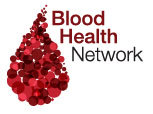2017 Annual Meeting Abstract Winners - Second PlaceThe Incidence of Perioperative Anemia and Iron Deficiency in the Gynecology Oncology Patient Population Who Underwent an Open Approach Procedure at Sunnybrook Health Sciences Centre in 2014.Authors: M Iacovelli, MN, RN1, D Bentley, RN1, D Vicus, MD2, Y Lin, MD1 1Sunnybrook Health Sciences Centre, Blood Conservation Program, Toronto, Ontario, Canada; 2Sunnybrook Health Sciences Centre, Department of Obstetrics and Gynecology, Toronto, Ontario, Canada Introduction Anemia is known to be the most common predictor of perioperative blood transfusions; a treatment that is identified to increase risks of morbidity, mortality and length of hospital stay. The purpose of this study was to evaluate the frequency of anemia (hemoglobin less than 12 g/dL) and iron deficiency (ferritin less than 30 µg/L or transferrin saturation less than 20%) in the preoperative gynecology oncology population, to determine if anemia predicts perioperative blood transfusion and to ascertain whether there was sufficient lead time for anemia management interventions. Methods A retrospective review was completed of gynecology oncology patients who underwent an elective open approach surgery, predominantly abdominal hysterectomies, in 2014 at Sunnybrook Health Sciences Centre in Toronto. Data collected included hemoglobin, mean cell volume and iron studies from the first surgeon visit, date of surgery decision, pre-assessment clinic date and immediately preoperatively. Perioperative red blood cell transfusion was also recorded. Results 282 patients undergoing elective open approach surgeries were included. 102 patients (36%) were anemic at the earliest recorded CBC. 33 patients (12%) had iron studies with 10 (4%) confirmed as iron deficient. The earliest CBC measured was at the first surgeon visit for 134 patients (48%), surgery decision date for 15 patients (5%), pre-assessment clinic for 123 patients (44%), and immediately preoperatively for 5 patients (2%). No CBC was recorded for 5 patients (2%). The median time to surgery from first surgeon visit was 41 days (IQR 22-75), from surgery decision date was 30 days (IQR 19-51) and from pre-assessment was 8 days (IQR 5-17). Overall, 65 patients (23%) were transfused. Of these, 46 patients (71%) were anemic at the CBC closest to surgery compared to 28% (59/212) of patients who were not transfused (Fisher’s exact test, P<0.0001). Discussion One third of gynecology oncology patients undergoing elective open approach surgeries have preoperative anemia which is associated with increased perioperative blood transfusions. Iron studies are not being done routinely, making it difficult to determine the rate of iron deficiency anemia. There is opportunity for anemia management interventions starting at the first surgeon visit or the surgery decision date. Early identification and treatment of anemia and iron deficiency may contribute to fewer transfusions perioperatively and better patient outcomes.
|



